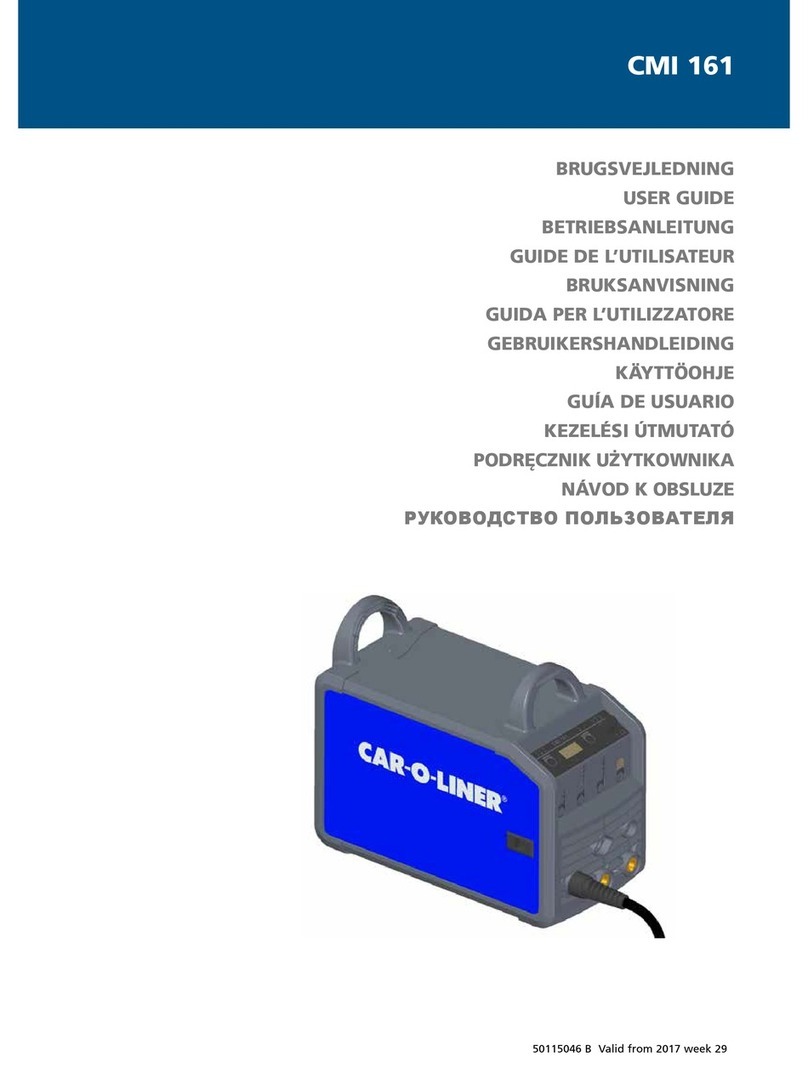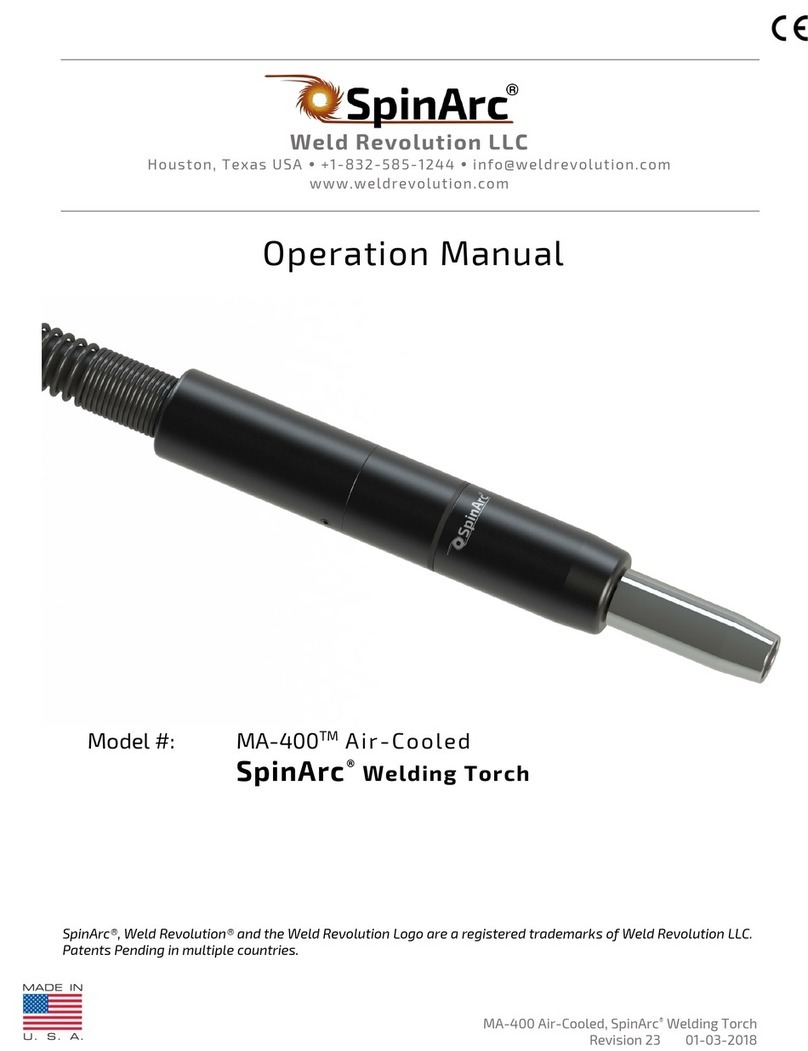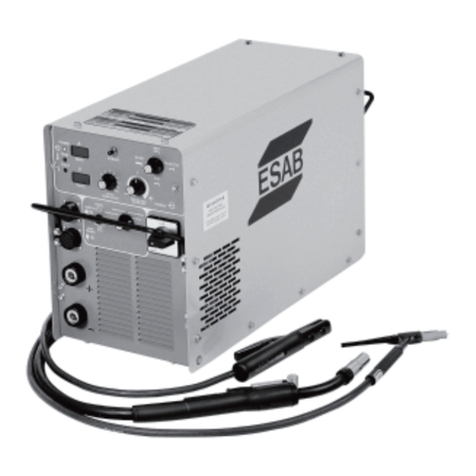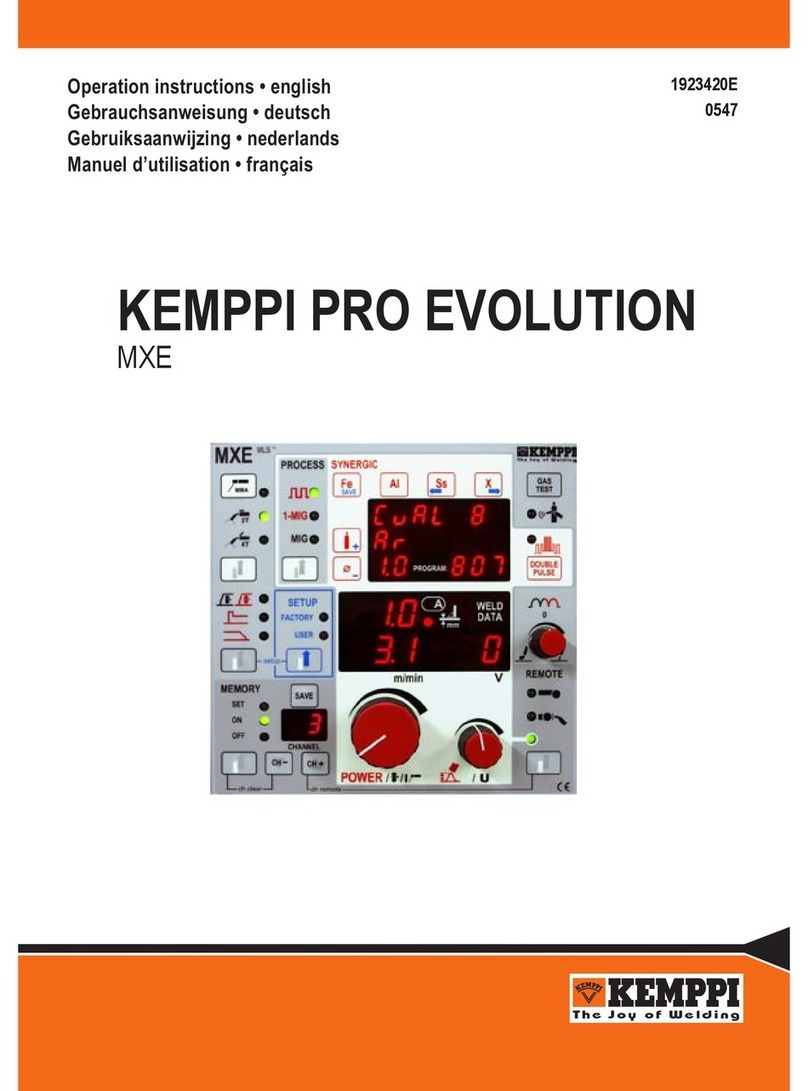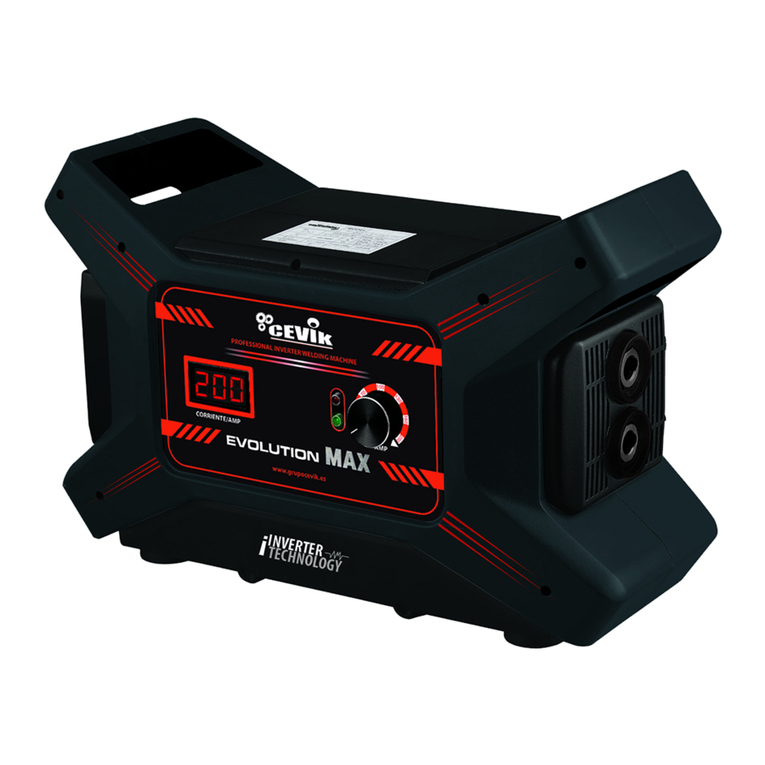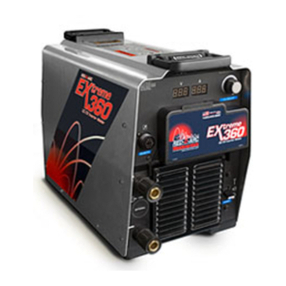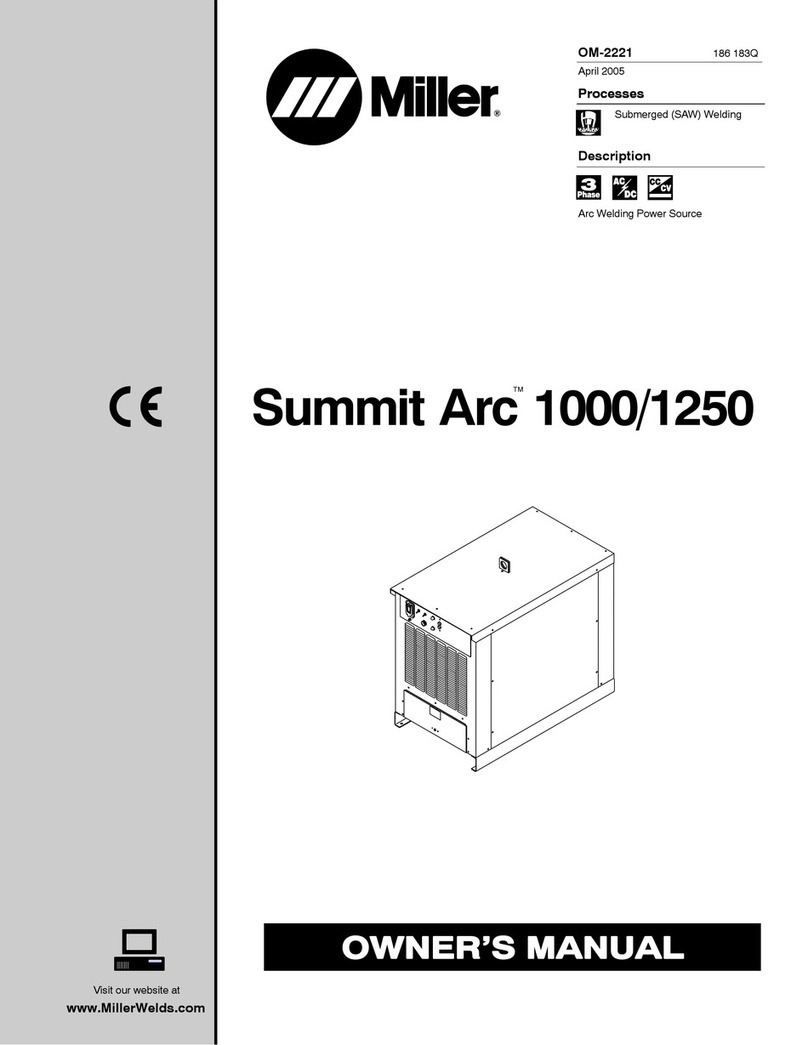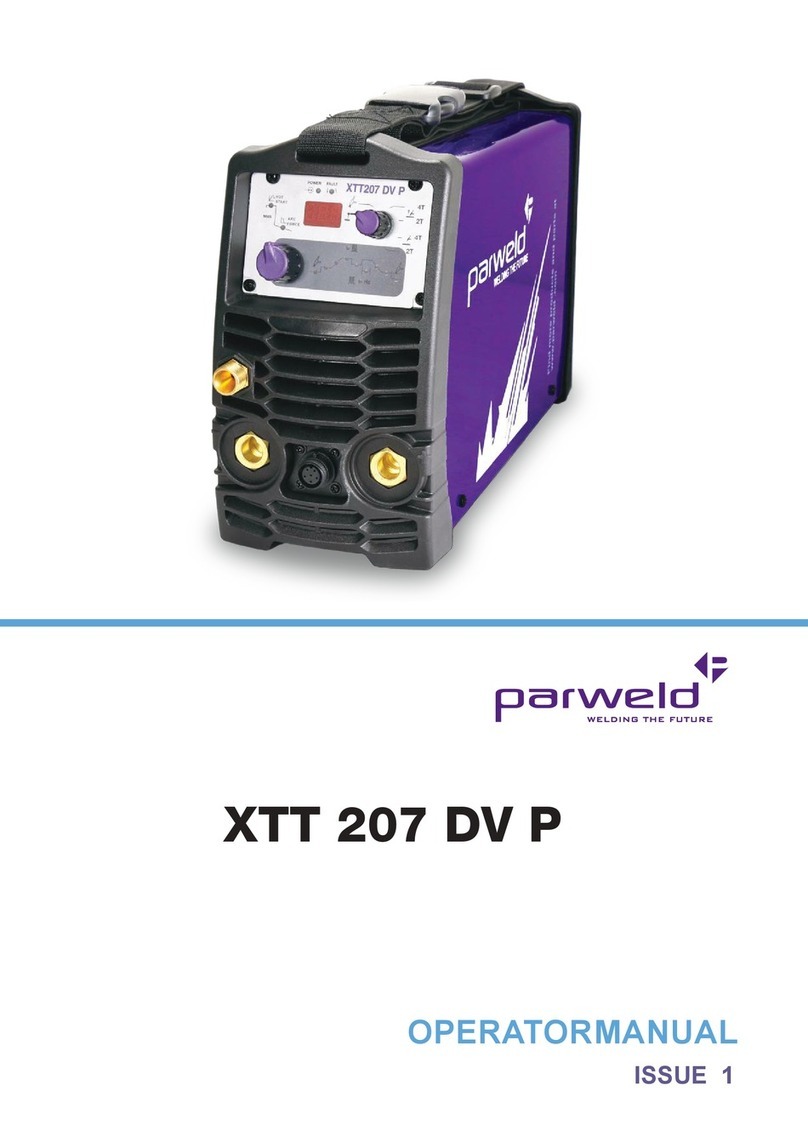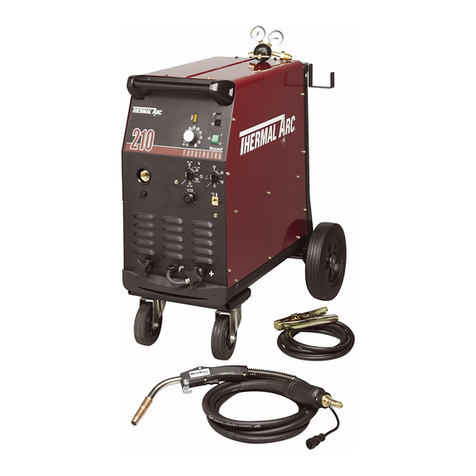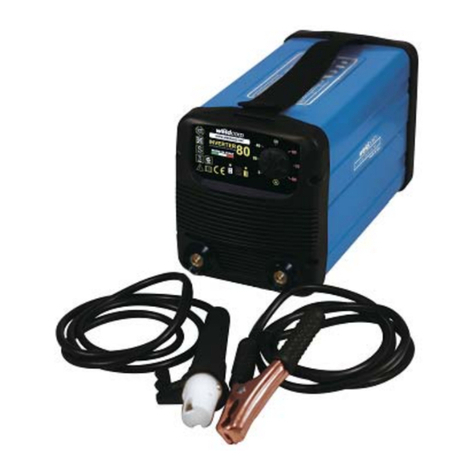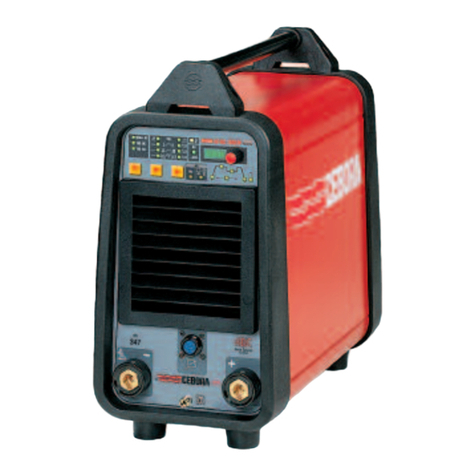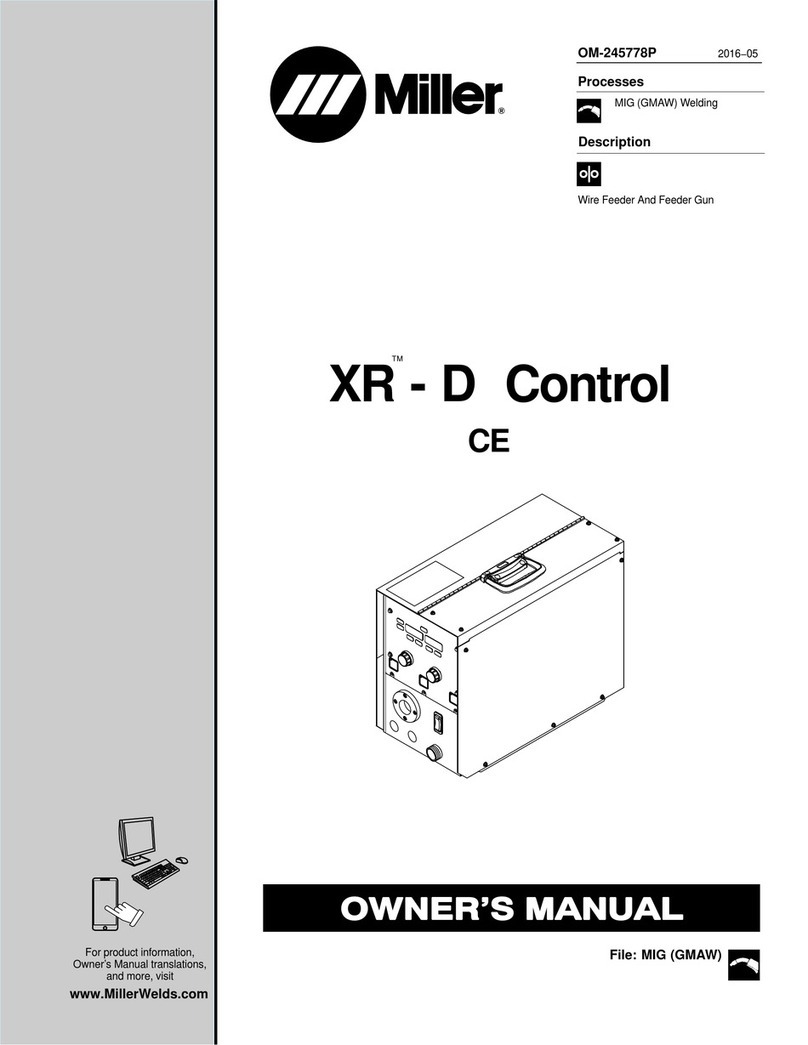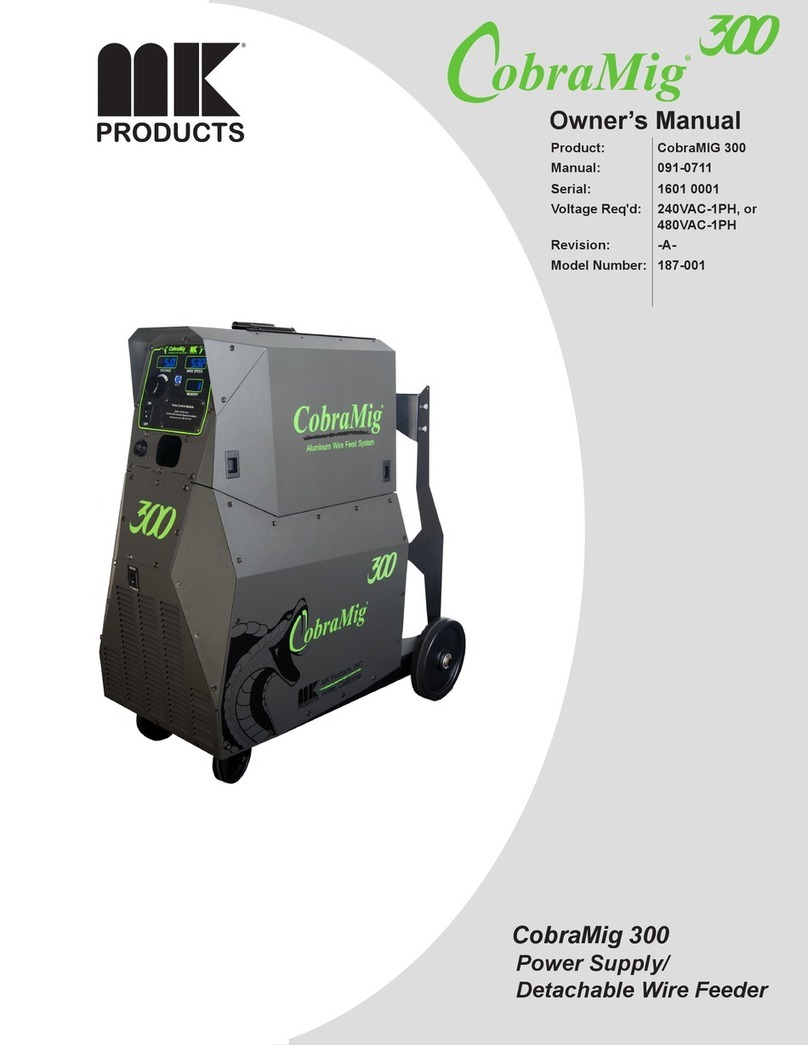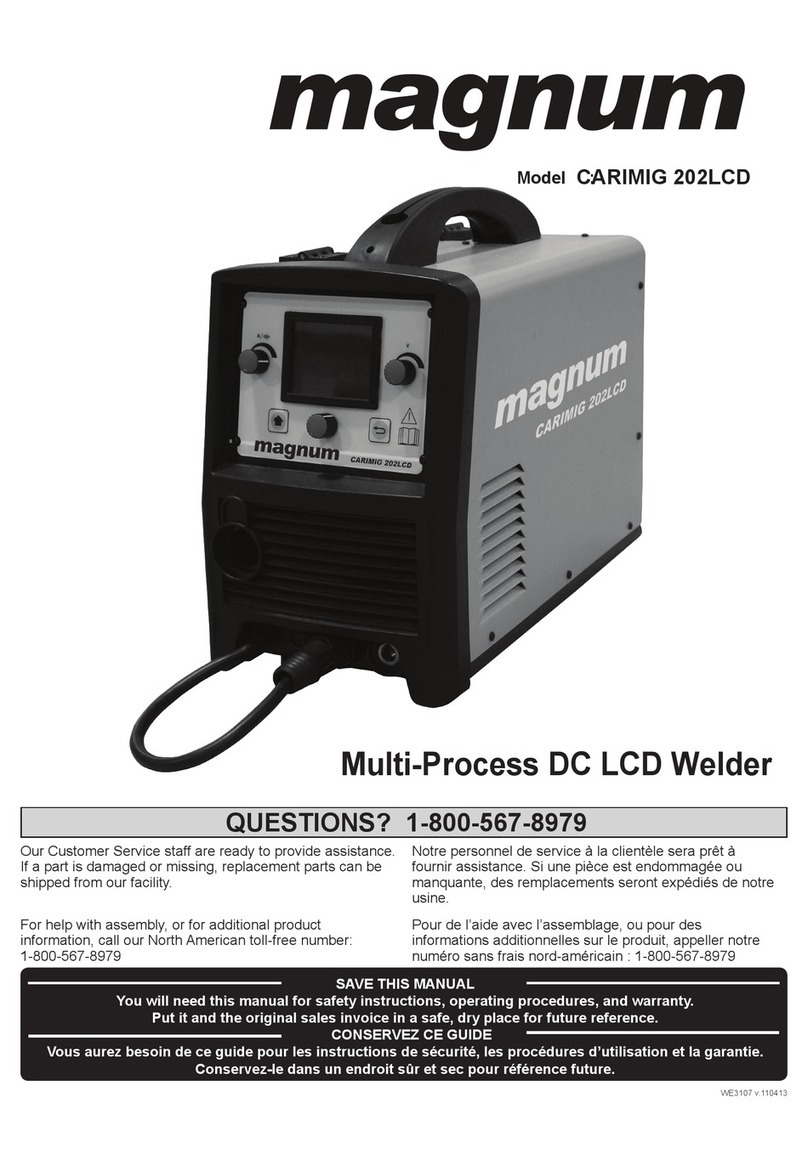Merc-O-Tronics 98 User manual

THIS SHEET APPTIES TO MODELS
SERIAL NO's. I 5 p00 AND
DESCRIPTION
PATENTED - OTHERS PENDING
HAVING
UP.
LO.HI
CURRENT
coNtlol
xio! rol
PO€8
l€sT
IETER
ADJU!TIEXT
t0e lcrlt!
aAxo6
MEfEI
ZERO SET
AOJUSTMIi'
SCREf
JAC( FOR
tx5uuTt0x
TED INDIqTOT
LIGHT 15 il, tX
llL EtTtdS
I INRU!
sE!€crq
gttcH /
xx08
Pta!5 tEo auTTd
FOR rE DtxG SC LE r a tc€raR oJUiTrtxr
FOR IC^LE NO. 2 AND 3
Figure I
SERVICE NOTES
May we sqggest, nhen testi,ng, place Wagneto Analyzer as uell as Com-
ponent Magneto Pmts on an INSULATED OR WOODEN TABLE TOP. This
will preuent any leakage or shock hazards.
Your Merc-O-Tronic Ignition Analyzer is equipped with either a motor
or a vibrator. The motor has oil lite bearings and should be lubricated
with a light oil once every six months. Lubricate cam wick at same time.
(DO NOT OVER LUBRICATE. ) If replacement of breaker point is re-
quired, order from Merc-O-Tronic Instruments Corporation as this is a
special breaker assembly. Breaker points are to be set at 0.013. Pres-
sure not to exceed 15 oz.
If vibrator fails to operate check and make certain that vibrator is in
socket. When inserting vibrator, make certain pins line up with holes in
socket.
NOTE: This is a special vibrator, if replacement is necessary order
from your distributor or direct from factory. Merc-O-Tronic Part No.
1960-V-6593. (DO NOT ATTEMPT rO USE ANy STOCK VTBRATOR.)
Your analyzer is equipped with a Burgess 4F5H7 l/2volt battery. If
unable to obtain locally, order direct from Merc-O-Tronic.
Be sure and specify type of battery required and serial number of unit.
Nevtsed J- l -6y
v*l tcALE
5!ttci
:d
,.!7
'1

OPER ATING IN sTR U CTIONS
For Model 98 Beginning with Seriol No.l5,O00
Before any attempt is made to use this instrument, read the following
instructions. They were prepared to enable those having only a minimum
of experience to test app repair the magneto ignition system equally as ,--.
well as the electrical specialist. Adhere to the instructions in sequence.
Do not jump from the first test to the fourth or the third to the fiffh, etc.
1. Your Merc-O-Tronic Magneto Analyzer is shipped with a dry battery
installed in the unit. Remove the 2 metal screws at the top of the
panel. This will allow the top to swing back, and you wiII notice
that the positive (red) battery lead is disconnected. Connect this
lead to the positive (+ ) post of thebattery. (When replacing battery,
make certain positive terminal is to right side of tester and that
terminal nuts are tight.)
2. t(Zerot' meter by turning the small adjustment scre'w on front of
meter until pointer hand lines up with zero on Scal.e No. 1, left side.
This is set at the factory, but should be rechecked.
3. To determine the battery life do the following: Move switch for volt
scale No. 1 to ((ON" position. Attach small black test lead to
negative and red small test lead to positive lugs on battery. Then
place selector switch on No. 1 position. (Red pilot will be on and
vibrator will be running). Read red figures on top of Scale No. 1.
Battery should check not less than 6.5 volts or proper readings
cannot be obtained. (Each division on volt scaie equals 0.5 volt).
For bench use this analyzet can be connected to an 8 volt
storage battery power supply. For 8 volts tap off 4 cells from a 12
volt storage battery.
4. Your Merc-O-Tronic Magneto Analyzer is now ready for use.
The following batteries can be used in place of Burgess 4F5H:
Eveready 715
Neda 903 Olin 5605
RCA VS139 Ray-O-Vac 903
Mallory M903
To check low OHM resistance values see page 20.
See Page 14 for Voltage Test Procedures.
CAUTION: DO NOT CONNECT TEST LEADS TOGETHER WHEN
SELECTOR SWITCH IS TURNED TO POSITION NO. 1 AS THIS IS
A DIRECT SHORT ON THE BATTERY.
FOR ALL TEST PROCEDURES INVOLVING SELECTOR SWITCHES
1 THRU 6 - VOLT SCALE SWITCH MUST BE IN ((OFF" POSITION.
5. To check condens.er leakage (on Scale No. 5) and condenser capacity
(on Scale No. 4), plug cord into 115-volt 60-cycIe AC electrical
outlet. This is the only time 115-volt 60-cycle AC is required. To
read, press red button, the electrical charge placed in condenser is
automatically discharged when releasing red button.
6. SPECIAL NOTICE: When checking Lauson Power Products Coils
#30546, 30560 and 29632 or any coil with internal condenser the
5 m.m. pot spark wiil appear fizzy. DO NOT let this fuzzy spark
mislead you. If spark is steady, coil is good,

PRIMARY COIL
GROUND
Figure 2
Figure 3
POINT ASSEMBLY
Figure 4
SPARK PLT'G
HIGH TENSION LEAD
SCREW }IOLDING CORE
TO STATOR PLATE
SPARK PLI.,,G LEAD
CONDENSER
BREAKER POINTS
ASSEMBLY
ARK PLI'G LEAD
cotL
PRIMARY OR + LEAO
.- PRIMARY
I GROUND TERMINAL
CONDENSER
+ MAGNETO HOUSING
CAM WIPER
+
SCREW FOR
COIL PRIMARY
GRC'UND LEAD
PRIMARY COIL |
-r
OR + LEAD
CONDENSER
LEAD
BREAKER POINT
TERMINAL SCREW
HIGH TENSION
CONNECTION
AOJUSTING SCREW TERMINAL SCREW
FOR CONNECTING
BREAKER POINT
ASSEMBLY
CONDENSER.ANO
COIL PRIMARY
LEAD.

ATTACH SINGLE
RED TEST LEA
ATTACH
SMALL BLAC
TEST LEAD
TO HOUSING
ATTACH SMALL RED
TEST LEAD TO COIL
PRIMARY
ATTACH
SMALL BLACK
TEST LEAD
TO HOUSING
PLACE PIECE
OF CARDBOARD
BETWEEN
BREAKER POINTS
ATTACH SMALL RED
TEST LEAD TO COIL
PRIMARY
REMOVE CONDENSER
TERMINAL SCREW
HERE AND SEPERATE
LEADS FOR THIS TEST
Figure 5
Figure 6
4
ATTACH SINGLE
RED TEST LEAD

COIL POWEF TEST
CONNECT SMALL
BLACK TEST LEAD
TO COIL PRIMARY
DISCONNECTING
2.
3.
4.
coNoENsER coNNECT sM;i-L
REO TEST LEAO
#'l'X'"'lf-
Figvre 7
1. It is .not necessary to remove magneto
parts from stator Plate assembIY. Iy from engine or
Place a piece of cardboard between breaker poiifis to
Connect small black test lead to coil primary ground wire'
Connect small red test lead to coil primary lead or breaker point
assembly terminal.
Connect single red test,Iead to terminal of spark plug wire.
Alter wiring hookup is made, as'shown in illustrations 6 or 7, the
current control knob should be to extreme left,beyond "Lo" position.
Turn selector switch to position No. 1 ("Coil Power Test")'
Slowly turn current control knob clockwise and note the current value
on Scale No. 1.
when it reaches the operating amperage for'that particular winding,
shown in this manual under Manufaeturer's Specifications, stop and
note the 5 MM spark gap, lt should {ire steadily.
If the spark is faint, intermittent or no spark has occurred at this
reading, the coil is defective and must be replaeed' *\
If a steady spark. Occurs below Manufacturer's Specifications, this
indicates a very good coil. : '
5.
6.
7.
8.
10.
11.
9.
CONOENSER
PLACE PIECE
OF CARDBOARO
BETWEEN
BREAKER POINTS
\\ \
\ \CoNNECT
\ SINGLE RED
\ TEST LEAD
\ HEFE
HIGH TENSION

COIL HIGH SPEED TEST
12. If the coil is good on Coil power Test, preceding, perform the High
Speed Test.
13. continue turning the current control knob clockwise to the right, for
maximum reading of met*.
14. The spark gap should fire steadily.
15. If the spark is faint, intermittent or no spark occurs, the coil is
defective at high speed and.must be replaced.
16. Complete this test as quickly as possible and immediately upon com-
pletion, turn selectot' switch and power control to ,'OFF" position.
On Fairbanks-Morse and similar Magnetos, it is necessary to remove
the distributor cap and end cap so single red test lead can be attached to
secondary terminal of coil "see Fig. 5". Small red test lead is attached
to coil primary lead after the lead has been removed from breaker point
terminal. The small black test lead is attached to housing "see Fig. 5".
When checking coil on stator plate with crankshaft type high inductance
rotating magnet (i.e. Wico, Scintilla and similar type magnetos), be sure
rotating magneto is in neutral position (magnets not opposite the coil
core).
NOTE: When testing coils off stator plate, it is absolutely necessary
that the laminated core be in the coil.
NOTE: On Fairbanks-Morse and
primary lead must be removed from
test. This also applies to all coils
laminations. See Figure 5.
similar type magnetos, the coil
breaker point terminal during this
which are permanently grounded to
Coils with Two (2) Secondarys Testing, see page 28.
Stator plate with 2 coils mounted, each coil to be checked separately
as noted in Fig. 7.
NOTE: AII coils should start firing 1 to 3 divisions before rated
specifications. Coils which first start to fire on "rated" specifications
are considered marginal and would give considerable trouble in starting
engine and should be considered as defective.

COIL SURFACE INSULATION TEST
CA R DBOAR D
Figure 8
1. Remove single red test lead from coil secondary, (High Tension lead)
see illustration Fig. 8.
2. Small red and black test ieads stay connected as previously.
3. PIug insulation test prob into "JACK" on front.of tester.
4. T\rrn selector switch to position No. 1.
5. T\rrn current control knob to "Hf" position for maximum current
reading on meter. "Do not exceed meter reading."
6. Pass end of insulation test probe over the insulating surface of the
coil and spark plug wires.
7. If coil insulation is cracked, leaking or damaged, a spark discharge
will be noted at the cracked or leaking surface.
8. Do not permit test probe to linger too long at any point while con-
ducting this test.
9. Completing test as rapidly as possible, as this is a severe test on a
coil.
A faint spark occurring around coil insulationduringprobing is a corona
spark and does not illustrate a defective coil.
w1
PATENT PENDING
rl
,. E"
U" t"" Powrn tEEt

COIL CONTINUITY TEST
CONNECT SMALL BLACK
TEST LEAD TO COIL
PRIMARY LEAD
t
CONNECT SMALL REO
TEST LEAD TO COIL CORE
Figure 9
NOTE: Scale 3 has two scales. The upper number is the number
shown on Mfg. specifications or are comparative numbers in place of
actual ohm resistance "lower numbers." This is an added feature to our
Iater model units starting with Serial No. 4050.
1. Turn selector switch to position No. 3 CoiI Continuity.
2. Clip small red and black test lead together.
3. T\rrn meter adjustment knob for scale No. 3 until meter pointer lines
up on set position on right side of scale No. 3.
4. Connect small black test lead to coil ground wire as in previous test.
5. Connect small red test lead to spark plug "high tension" lead.
6. Reading must be between the two values for that particular coil
shown in this manual under manufacturer's specifications.
7, Reading of actual resistance in ohms can be obtained by reading
Iower numbers in same scale.
8. Readings lower than the lowest value under manufacturer's specifi-
cations, the secondary winding is shorted.
9. Readings higher than the highest value shown in the specifications,
the secondary winding is open.
70. In either case, the coil is defective and must be replaced.

PRIMARY RESISTANCE TEST
CONNECT SMALL RED
TEST LEAD TO POSITIVE
PRIMARY LEAD ON COIL r"'fl7
CONNECT SMALL BLACK
TEST LEAD TO COIL
NEGATIVE PRIMARY LEAD
Figure 9A
1. Turn selector switch to position No. 2, Distributor Resistance for
checking low OHM resistance values.
2. Do not ctip test leads together. Turn meter adjustment knob for
scale No. 2 until meter pointer lines up on set position on right side
of scale No. 2. Your meter is now set to check atl low OHM values
from 0 to 30 OHMS.
3. Clip small red test lead to primary Positive side of coil.
4. Connect small black test lead to primary Negative side of coil.
5. ReadRed figures on Scale No. 2.
6. Reading must be between the two values for that particular coil
shown in this manual under manufacturer's specifications.
7. Resistance in OHMS can be obtained by reading Red numbers in
same scale.
8. Readings lower than the highest value shown in the specifications,
indicate the primary winding is shorted.
9. Readings higher than the Iowest value under manufacturer's specifi.
cations, indicate the primary winding is open.
10. In either case, the coil is defective and must be replaced.
8A

COIL GROUND TEST
SMALL BLACK
TEST LEAD
CONDENSER
CONDENSER
SINGLE RED
TEST LEAD
NOT USED
1.
2.
SMALL RED
TEST LEAD
Figure l0
Leave small black test lead connected as in CoiI Continuity Test.
Remove small red test lead from hieh tension wire and connect it to
ground or frame of stator plate. (See wiring hookup, Fig. 10.)
Turn selector switch to position No. 3 and read Scale No. 3.
The meter pointer hand must be on the "ZERO" line at the left.
Any meter movement to the right indicates a grounded coil.
If there is a meter pointer hand movement to the right, in#cating a
grounded coil, remove the breaker point terminal screw at "X" on
diagram Fig. 10.
3.
4.
5.
6.
7. Remove primary coil wire at this point. If the meter needle remains
to the right the trouble is elsewhere.
8. Check condenser for short or grounded breaker points.
NOTE: When coils are permanently grounded to lamination (i.e., Fair-
banks-Morse, Bendix-Scintilla), see illustration and similar type Fig. 11,
it is not possible to check for ground. This type of coil must indicate a
ground (movement of meter pointer hand to full right).
NOTE: When coils are not permanently grounded to lamination' it is
possible to check for ground. This type of coil must not indicate any
movement of meter pointer hand.

CONNECT SMA,LL BLACK
TEST LEAD TO COIL CORE
Flgure 12
CONNECT SMALL RED
TEST LEAD TO COIL
PRIMARY LEAD
Figure I I
AUTOMOTIVE TYPE COILS
To test automotive type coils, plaee small red test lead to positive (+)
terminal of coil and small black test lead to ground ( - ) terminal of coil.
Place single red test lead into secondary high tension (plug in terminal)
of coil. Follow procedure for testing coils on pages b and 6 and refer to
illustration Fig. 13 showing insulation test on automotive eoil.
SMALL RED
TEST LEAD
SMALL BLACK
TEST LEAD
CONNECT SMALL
RED TEST LEAD /RED rEsr LE^D
\--^#,.',
CONNECT SMALL
BLACK TEST LEAD
Figure l3
l0

CONDENSER CAPACITY TEST
CONNECT SMALL
BLACK TEST LEAD
TO HOUSING CONNECT SMALL
RED TEST LEAD
Figure l4
1. To make condenser test, cord must be plugged into
AC outlet.
2. Leave cardboard between breaker points.
115 volt 60-cvcle
' .isr€ft
3. Place selector switch on position No. 4, condenser capacity.
4. CIip small red and black test leads together.
5. Depress red button, turn meter adjustment knob on scale 4 to set
Iineon scale No. 4 on right side of meter. (This adjustment is
for varying line voltages throughout the country.)
6. Unclip test leads.
7. Connect small red test lead to breaker terminal or if loose to con- :
denser lead.
8. Connect small black test lead to stator plate if condenser is mounted,
otherwise to body of condenser. (Depress red button to read Scaie 4.)
9. Condenser must be within manufacturer's specification for this par-
ticular motor.
10. If not, replace as a condenser that is over or under capacity could
cause burnt breaker points.

CONDENSER TEAKAGE AND SHORT TEST
CONDENSER
SMALL RED
TEST LEAD CARDE}OARD
BETWEEN
POINTS
1.
2.
tr*
3.
4.
SINGLE RED
LEAD NOT USED CONDENSER
SMALL BLASK
TEST LEAD
Figure l5
Connect small black tesiteaa to stator plate if condenser is mounted,
otherwise to body of condenser.
Connect small red test lead to breaker terminal. or if unmounted. to
condenser lead.
Leave cardboard between breaker points.
To make condenser test, cord must be plugged into 115 volt 60-cycle
AC outlet.
5. After wiring hookup is made, turn selector switchto No. 5 "Leakage"
and short.
6. Depress ied button and hold a minimum of 15 seconds. Read Scale
No. 5.
7. The meter pointer hand will move to the right and must return within
range of the narrow black bar at the left.
8. Any readings to the right of the black bar indicate the condenser is
Ieaking or shorted and must be replaced.
NOTE: On Fairbanks-Morse type magnetos or equal, the condenser
lead must be removed from the breaker point terminal when testing on a
eomplete magneto. Condenser should be taped against an insuiated board
while testing to show up loose element.
t2

CONDENSER SERIES RESISTANCE TEST
1. Leave cardboard between breaker points.
2. Place selector switch on position No. 6 condenser series resistance.
3. CIip small red and black test lead together.
4. Adjust meter setscale6tosetlineon right side of dial for scale No. 6.
5. Unclip test leads.
6. Connect small red test lead to breaker terminal or if loose to conden-
ser lead.
7. Connect small black test lead to stator plate if condenser is mounted
otherwise to body of condenser.
B. Meter pointer must be within ok green block on scale No. 6 on right .
side of meter. l
9. While testing move and "wiggle" the leadcomingout of the condenser.
,,a'''.#'-
10. Observe meter pointer for any movement. ..) ,
11. Loose connections can cause trouble if the condenser is subjected to
a great deal of vibration.
12, If meter pointer remains within ok green bar on scale No. 6 the con-
denser is sood.
18. If meter pointer moves into the red sectiot"t on Scale 6 or if by
wiggling the condenser lead it moves into red section, then the
condenser is defective.
t4. This test usually hetps to determine the ability of the condenser to
readily charge and discharge.
NOTE: fhis test is very sensitive, as the latest techniques are being
used for this test.
DUE TO THE SENSITIVITY OF THIS TEST, MAKE CERTAIN TEST
CLIPS AND PARTS THAT TEST CLIPS ARE ATTACHED TO ARE
CLEAN OR FALSE READINGS WILL BE OBTAINED.
t3

VOTTAG E AND COII POWER TEST INFORMATION
Use the two small test leads (Red and Black) for checking voltage read-
ings from 0 - 24 volts maximum. Smail red lead is positive and btact
Iead is negative.
Scale No. 1 is actually two scales in one. The red scale is for checking
voltage. Each red line or division represents 7/2 volt with a maximum
reading of. 24 volts. Do not attempt to check voitage if selector switch is
on any other positionthan "oFF" exceptwhencirecking battery in analyzer,
voltage can only be checked when volts Scale No. 1 switch is in the "oN,,
position.
THE BLACK SCALE IS FOR CHECKING AMPERAGE DURING THE
coIL PowER TEST ONLY. Each black division on the scale represents
l/70 of. an amp., with the black 1 representing 1 amp. etc up to maximum
of. 4 amperes. Amperage during coil power test can only be red when
The Volts Scale No. 1 switch is in the "OFF" position.
NOTE
When voitage switch is in "ON" position, analyzer is inoperative
on ail other tests. Be sure to place volt switch in ,'OFF,,
position for other tests on anaryzer. Do not attempt to use volt
scale for ammeter readings.
t4

BREAKER POINT TEST
SMALL RED
TEST LEAD
CONDENSER
REMOVE' CARDBOARD
FROM BETWEEN
BREAKER POINTS.
SINGLE RED
LEAD NOT USED CONDENSER
SMALL BLACK
TEST LEAD
Figure l6
TESTING FOR HIGH RESISTANCE IN PRIMARY CIRCUIT
1. T\rrn selector switch to position No. 2 Distributor Resistance.
2. CIip small red and black test leads together.
3. Turn meter adjustment knob for scale No. 2 until meter pointer lines
up with set position on left sidb of '(OK" block on scale No. 2.
4, Unclip small red and black test leads.
5. Connect small red test lead to breaker point terminal.
6. Connect small black test lead to stator plate or any part of engine per
illustration No. 16.
7. T\rrn crankshaft until cam allows breaker points to close.
8. The meter pointer must return in the ((OK" block.
9. If the meter pointer is in the high resistance band'"this indicates
that there is foreign matter between breaker points.
10. See note.
11. Breaker assemblies not meeting this test should be replaced.
NOTE: Although breaker points are made of non-corrosive metal a
current resisting tough film may form aJter the engine stands for a period
of time, especially if stored in a damp place. This film will cause hard
starting of the engine. By running a piece of stiff paper (such as a
business card) Sghareen the points under tension several times, the film
will wear and dirt or oil will be removed from between the breaker points.
After cleaning points in the above manner, the meter hand should be in
the "OK" block. If not, replace breaker points.
l5

1.
2.
TO CHECK CONDENSER FOR PROPER GROUNDING
Connect small black test lead to stator plate.
Connect small red test lead to bodv of condenser. Point B see illus-
tration FiS. 16.
Read Scale No. 2.
The meter pointer must be in the "OK" band.
If meter pointer reads in the high resistance band this indicates that
the condenser is not properly grounded to plate.
Check points in the same manner.
3.
4.
5.
6.
T IMING
CONDENSER
CONNECT PRIMARY WIRE
TO CORE AS SHOWN. BE
SURE SCREW IS TIGHT.
SMALL RED
TEST LEAD
CONDENSER
SINGLE RED-}
LEAD NOT USED
SMALL BLACK
TEST LEAD
Figure l7
BEFORE TIMING
Preliminary to timing motor, set the breaker points to the manuf acturer' s
specifications. Use a feeler gauge -- don't guess. Be sure the breaker
rubbing block is on the highest part ofthe cam when setting points. (Refer
to "Breaker Point Test", preceding.) Lubricate the cam oiler wick of
the breaker arm with fibre grease (as specified by manufacturers). Be
sure the moveable arm is free on pun and lubricate pivot pin with fibre
grease. Be sure all screws are tight and that all wires are in their
proper place.
TIMING
Remove paper from between breaker points and clean points before
test. DO NOT FILE.
Connect small black test lead to the stator plate, frame.
Connect small red lead to the breaker point terminal screw.
1.
2.
3.
l6

sM&L &rcX
LED rc GrcUND
(FRAE)
RED TEST LEAO
TO TERMINAL
Figure l8
"see your manufacturer's service manuar for the particular
motor specification -relative to piston movement with timing of
magneto." Set this first.
Again, be certain that the breaker points are mnking perfect contact.
Refer to "High Resistance Test in primary Circuit,,, preceding. After
wiring hoolmp is made, as shown in illustration preceding, turn selector
switch to position No.2r "Distributor Resistancet', and readscale No.2.
Rotate magneto or distributor in the advance direction. It x/ill be noted,
when points are closed, that the meter pointer hand will be in the ,rg6,i
block. The moment that the breaker points start to open, the meter pointer
hand will move into the high resistance band. In this m:urner, the timing
can be set in relation to movement of the piston.
on magnetos, such as Fairbanks-Morse or Kiekhaefer type, connect the
small red test lead to the exposed primary ground terminal and the black
lead to the frame or ground. See Fig. 18.
ARMATURE GROUND TEST
Figure l9
T\rrn selector switch to position No. 3, .,Coil Continuity,,. Attach
small black test lead to armature shaft, as shown in ilustration above,
and use small red test lead to probe the commutator copper divisions.
If the pointer hand moves across the meter to the right, as ttre divisions
are contacted, the armafure is grounded and must be replaced or com-
mutator must be cut down and mica must be undercut. Meter pointer
hand should not move during this test.
t7

SPARK TEST
"''* :=,J;:X':;::2
./
SINGLE RED TEST LEAD
ROBE TEST LEAD
Figure 20
With the selector switch in "OFF" position, disconnect the high tension
lead from the spark plug and clip single red test lead to spark plug lead.
Place test probe into red jack and attach opposite end to cylinder block to
form ground. Crank engine over and view spark jump through tester's
small window. If no spark, indications are that some part of the magneto
is defective or lead wire is broken. Repeat process for each spark plug
Iead wire.
NOTE: IF SELECTOR SWITCH IS IN ANY OTHER POSITION'
DAMAGE TO METER WILL RESULT.
STARTER SOLENOID TEST
SMALL RED
LEAD POSTTIVE
+ BATTERY
LEAI)
SMALL BLACK
LEAD
_ NEGATIVE
BATTERY
3.
4.
b.
6.
Figure 2l
1. T\rrn selector switch to position No. 3, "Coil Continuity"'
i. Connect small red tesf lead to one large terminal of solenoid, as
shown in illustration above.
Connect small black test lead to other Iarge terminal of solenoid.
with a battery of the capacity of the solenoid (6 or 12 volts), place
two jumper leads on battery terminals.
Conriect positive Lead to smatl terminal of solenoid.
connect negative lead to case or bracket of solenoid for ground.
NOTE: On solenoids with two small terminals, one is a ground and one
aJr energized terminal.
7. Meter pointer hand must move fully to right of meter'
8. If no movement or only partial movement is indicated, the solenoid
is defective and must be rePlaced.
CAUTION: DO NOT CONNECT BATTERY LEADS TO LARGE TER'
MINALS OF SOLENOID OR METER WILL BE DAMAGED.
t8

SMALL
RED
LEAD
CONTINUITY TEST
Figvre 22
To test ignition or electrical wires and harness or parts for "open
circuits", turn selector switch to position No. 3, "Coil Continuity"
Zero out meter. Connect small black test lead to one end of wire and
small red test lead to opposite end of same wire, as shown in illustration
above. Meter pointer hand must move fully to the right of meter. If
meter pointer hand stays at left, this indicates a broken wire. Move lead
wire back and forth while making test.
RESISTANCE TEST
To check an electrical harness and wire terminals to determine if the
part is OK, place selector switch on Scale No. 2, "Distributor Resistance".
Attach small red test lead to terminal of one end of lead and small black
test lead to other end. Meter pointer needle must return to "OK" block.
If needle favors right side away from ('OK" band it indicates a defective
connection inducing a resistance. Repair connection or replace part.
to
Table of contents
